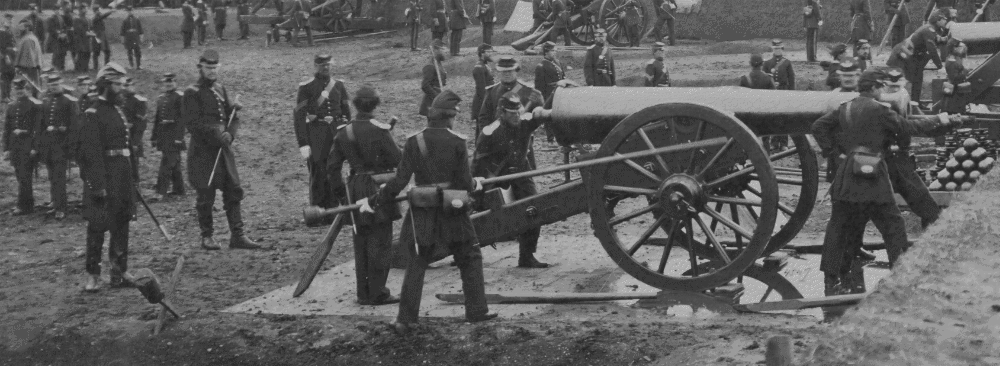Here is an image of part of the 1st Connecticut Artillery Regiment in Fort Richardson, a fort that protected Washington D. C. during the Civil War. This is a crop of an image that was probably taken in the winter of 1862, shortly after the conversion of this unit from infantry to artillery, and prior to the unit experiencing any combat. Note the spiffy uniforms and very military appearance of these men. Note the short swords and epaulettes. I think it makes for a very impressive display.

Here is another image showing men of the 1st Connecticut Artillery. In this case, the men are manning the famous 13″ mortar, Dictator, in front of Petersburg. This image was taken in the late summer of 1864.

What made me want to share these two images is the vast difference in appearance in the men between these two images. In the second image, the men assume a very casual appearance. Their dress is haphazard, with an assortment of hats and the frock coats have been completely dispensed with. What is more apparent is the lack of military bearing. They look to me exactly like a work crew at a construction site.
According to the regimental history of the 1st Connecticut, the regiment was initially sworn into US service on May 22nd, 1861 for three years service. The enlistments of the original men of this regiment were already up by the time of the second image. There is a note in the regimental history reporting that 400 men were to go home in May, 1864, well before this picture was taken. There were a number of new replacements in the regiment. Somehow, by now, the regiment was 1700 men strong, which was bigger than many infantry brigades from this time. The history contains a complete roster including enlistment and discharge dates for each soldier. I’m thinking about doing an analysis of company G, the company that manned the dictator to find out how the size and composition of the unit changed over time.
As pointed out in a previous post, a number of the officers of the 1st Connecticut, went home in late October and early November. I can’t find any indication of why the captains stayed on until fall.
Is the second image…
- an image of men that were complete exhausted by war
- veterans that were disdainful of the pomp of the early war days
- draftees that didn’t care for military life
- the difference between garrison uniforms and those worn on an active campaign
- was there something else that caused them to appear so bedraggled?
I did find one hint in the history. That was a set of instructions that Colonel Tyler gave shortly after arriving on the peninsula in April of 1862. It says
The light blue pants will be packed in the knapsacks, and the old ones worn on the march.
That is all that I have on this topic at the moment. Any thoughts?
